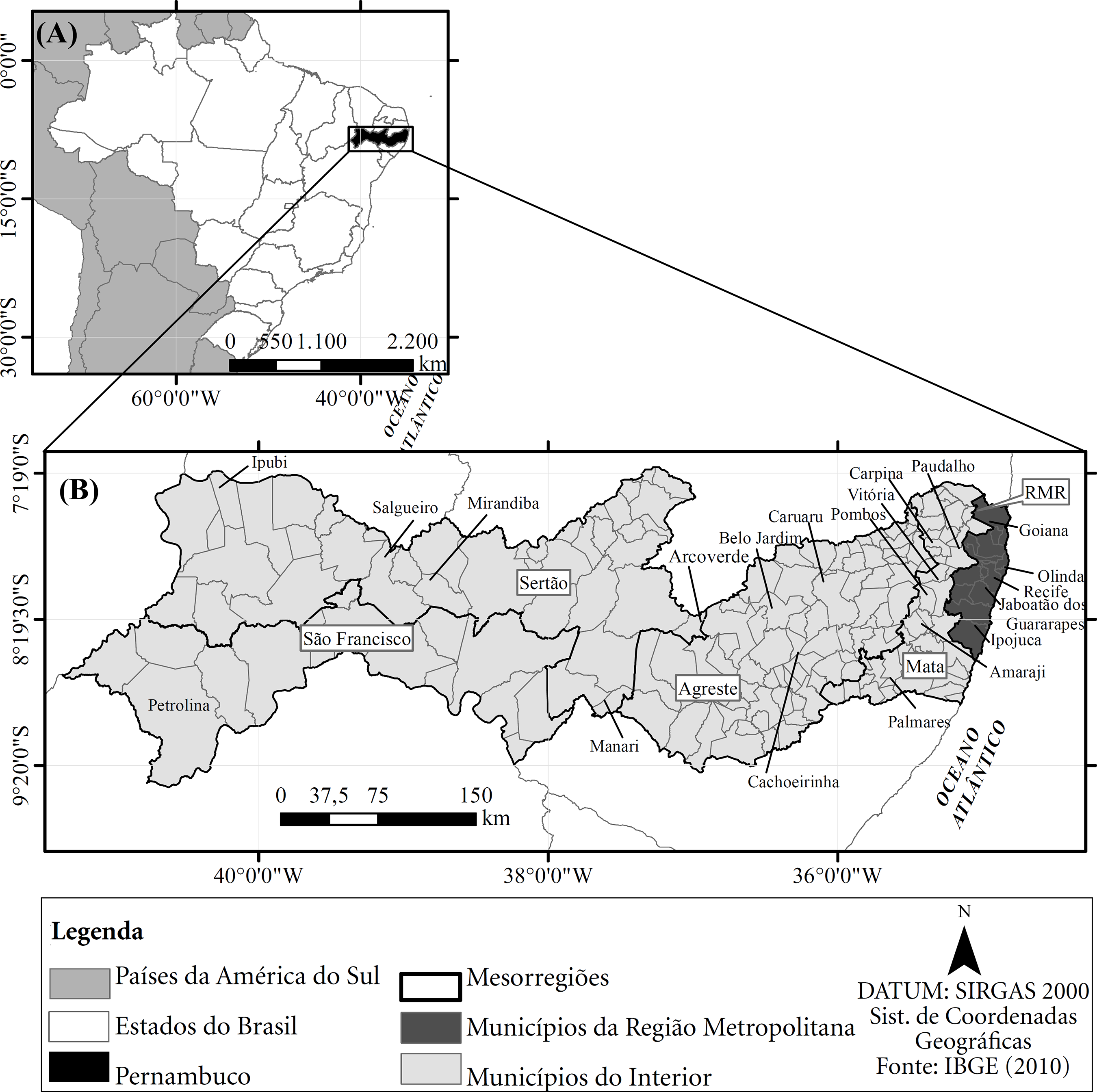Abstract
This study involved an ecological study between March and June 2020 consisting of a spatial and temporal analysis of the spread of Covid-19 to the interior of Pernambuco and related socioeconomic factors. Maps were generated from the incidence coefficient by municipality of residence to determine the spatial dynamics of Covid-19. The correlation between socioeconomic indicators and the coefficient in the metropolitan regions of Recife (MRR) and inland regions was studied. This coefficient was levelled, and the global Moran test was applied. The first cases were recorded in and around Recife. The spread of the virus took place in neighboring municipalities and in those served by major highways. The highest incidence in MRR (640.22/100,000 inhabitants) was correlated to larger population and demographic density and lower rate of urbanization and IDH-M. Inland, the incidence (361.29/100,000 inhabitants) was correlated with a larger population, demographic density and urbanization rate, and a smaller area (p<0.05). The areas of greatest risk were concentrated in MRR, but the interior showed areas of transition, indicating a tendency to spread (p<0.05). Being aware of the spatial distribution pattern of Covid-19, combined with the associated factors, may contribute to greater effectiveness of control actions.
Key words
Covid-19; Spatial analysis; Epidemiology; Risk

 Thumbnail
Thumbnail
 Thumbnail
Thumbnail
 Thumbnail
Thumbnail
 Thumbnail
Thumbnail
 Fonte: autoria própria.
Fonte: autoria própria.
 Fonte: autoria própria.
Fonte: autoria própria.
 Fonte: autoria própria.
Fonte: autoria própria.
 Fonte: autoria própria.
Fonte: autoria própria.